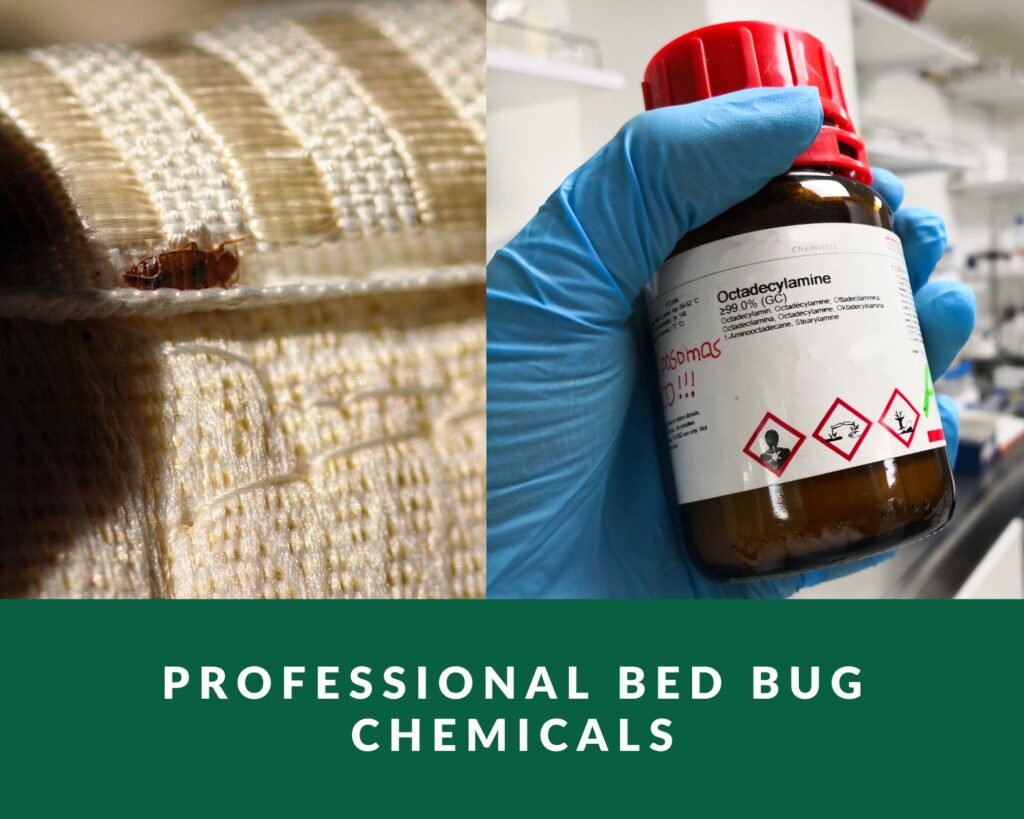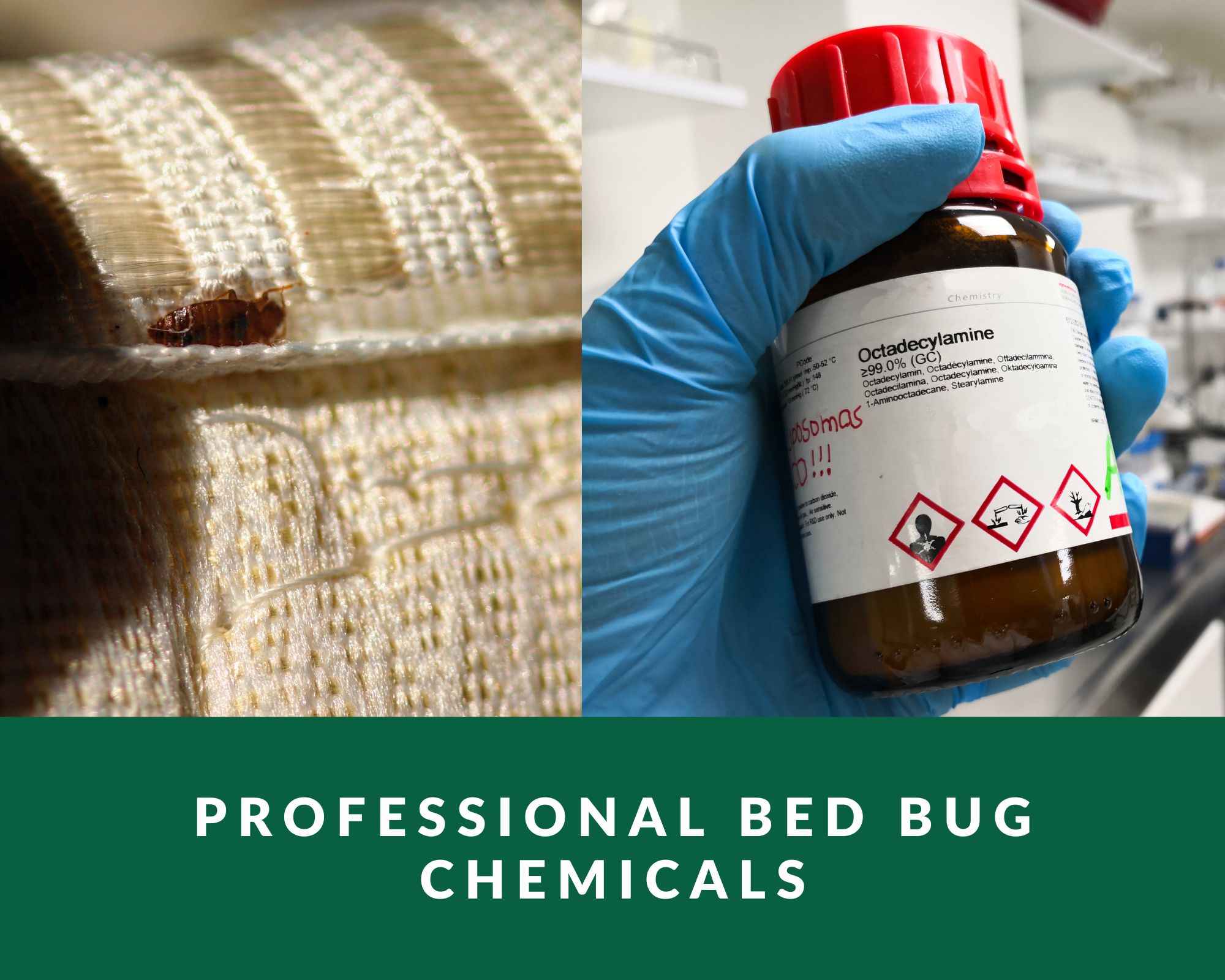
Although the EPA has approved 300 different pesticide products, they all come under one of seven chemical categories. Diverse chemical classes have different mechanisms of action for dealing with bed bug issues.
Utilizing insecticides with various mechanisms of action can reduce the likelihood that the pests will evolve resistance. Each of the more well-known chemical classes for treating bed bugs is covered in greater detail in this article.
Professional bed bug chemicals
Listed below are expert bed bug chemical:
1 Pyrethrins and Pyrethroids
These are some of the most popular substances that are used to get rid of bed bugs as well as other indoor pests.
Pyrethrins are naturally occurring insecticides derived from chrysanthemum flowers, whereas Pyrethroids are artificial chemical insecticides designed to mimic the effects of pyrethrins. Although both are effective in killing bed bugs, some species have recently started to exhibit resistance to such substances.
Only public health officials and specially trained staff from bed bug control units are permitted to use the majority of pyrethroid bed bug control products.
Pyrethroids are applied by bed bug exterminators in the form of a very low volume spray. Small aerosol droplets released by ULV sprayers stick to the air and kill adult bed bugs when they come into touch with them.
Examples of pyrethroid product
A. Flex 10-10
A chemical pyrethroid pesticide called Flex 10-10 will quickly eliminate bed bugs and is suitable to use on bedding and furnishings. Permethrin and PBO-based Flex 10-10 is a great bed bug and general pest control product.
Permethrin effectively combats bed bugs, and when used in a solution like Flex 10-10, which is designated for more than just cracks and crevices, it helps consumers get wider coverage.
How it works
You must first combine Flex 10-10 with water in a pump spray bottle before using it. Calculate the area that is infested to determine how much product you will use. Add the Flex 10-10 after halfway filling the spray bottle with the necessary amount of water. You can begin spraying after thoroughly blending the solution in the sprayer.
With the help of an insect growth regulator called Gentrol IGR, bed bug eggs and nymphs that come into touch with the substance will develop abnormally and eventually perish before it became adults.
B. Gentrol
With the help of an insect growth regulator called Gentrol IGR, bed bug eggs and nymphs that come into touch with the substance will develop abnormally and eventually perish before they become adults.
Use Flex 10-10 and Gentrol in combination to clean the room’s baseboards, furnishings, closets, flooring, bed frame, and box spring. Apply the mixture into the box spring after removing the covering. The rooms closest to the infestation will then be sprayed. Apply to the baseboards and floors in these rooms.
Note: Although you can combine the two solutions to apply them, you should start by spraying your mattress with Flex 10-10 alone because Gentrol IGR cannot be used on mattresses
C. Deltamethrin
It is a pyrethroid chemical and one of the most widely used household insecticides on the market today. It makes use of flavorless substances that won’t discolor or leave behind any unpleasant residue. D-fense dust is a common example of deltamethrin.
Bed bugs frequently use wall voids and the space between power sockets to travel across rooms, and D-Fense Dust, which is a deltamethrin-based product, will reach bed bugs in these areas. After application, D-Fense Dust can continue to work for up to 8 months.
You’ll need a handheld duster to utilize D-Fense Dust. Open your handheld duster, make sure there is space within for air to flow, then fill it halfway with D-Fense Dust.
Squeeze the duster to apply. Use this solution in all the crevices and cracks that were previously treated, make sure it gets into the tiny, difficult-to-reach slots in the bed frame joints that can’t be taken apart.
Other Examples are:
- Tetramethrin
- Cypermethrin
- Fenpropathrin and so on.
Desiccants
This substance acts by destroying the bed bug’s outer coat, which leads to their gradual dehydration and final death. Because desiccants take advantage of bed bugs’ physiological weakness, unlike other pesticides used to control bed bugs, they cannot develop a resistance to this approach of eliminating them.
Make sure what you’re using is labeled to use for bed bugs alone because desiccants are also used for other things.
Examples of desiccants for bed bugs include:
A. Diatomaceous earth
Diatoms, a type of sea organism, are preserved in diatomaceous earth. A diatom’s body is primarily made of silicon dioxide.
It has microscopic edges that are so sharp they can cut through the exoskeleton of many different sorts of insects, including bed bugs. When the bugs are fractured, they gradually start to lose moisture and eventually become dehydrated and die.
The beautiful thing about DE is that it is a tool for both management and cure and is free of dangerous toxins.
How does diatomaceous earth kill bed bugs
As you move around the room, scatter some dust to cover the walls and ceiling. DE is especially helpful in regions that are challenging to treat with conventional therapy modalities.
For instance, you can sprinkle it behind light switches and place it behind electrical face plates using a bulb duster to get it deep into gaps and crevices.
Even mattresses and carpets can be treated with diatomaceous earth to eliminate any bed bugs that may be hiding there. To prevent it from being blown or pushed around excessively, it would be vacuumed up after usage in areas with high foot traffic.
Diatomaceous earth can be left for a very long time if it won’t be disturbed.
B. Silica dust
A soft, white, powdered version of silicon dioxide is known as silica dust (silica). It is a permeable, non-crystalline substance. Due to its electrostatic charge and light, fluffy texture, silica powder adheres to bedbugs that are crawling across the various surfaces where it has been spread. This improves it significantly as a bed bug control approach.
However, silica dust could be too light. As a result, the powder didn’t stick to the bugs and remained in suspension in the air. The silica powder can be weighed down by putting oil extract and other like additives into it or by mixing it with liquid sprays. This will facilitate the dust’s adhesion to the bed bugs and any surfaces it is applied to.
How does silica dust kill bed bugs
Bed bugs have an exoskeleton, just like many insects (waxy layer). In addition to offering protection, this keeps the bugs well-hydrated. The cuticles of bed bugs are covered with a waxy coating. The waxy covering is destroyed by silica dust, which causes the bugs to become dry and die from dehydration.
Biochemicals
In essence, biochemicals are concerned with the chemical elements and reactions that take place within living things.
To obtain this oil, the seeds of neem trees (which can be found in Asia and Africa) are literally squeezed. In turn, the oil has ingredients that can be utilized to eliminate bed bug adults, nymphs, and eggs.
Biochemicals for bed bug
There aren’t many biochemical insecticides on the market right now that have been approved by the EPA. The only biochemical substance approved for use against bed bug infestations is cold-pressed neem oil. Neem oil is supposed to help prevent bed bugs from biting in addition to having insecticidal qualities.
How does cold Neem oil work
After a week, cold neem oil loses its effectiveness, so while it may deter bed bugs, it is unlikely that it can eradicate them. Use it in conjunction with other powerful compounds for the greatest outcomes.
Pyrroles
Pyrrole is a volatile liquid that has no color and is an organic chemical that easily darkens when exposed to air. Pyrrole insecticides use the metabolic activity that occurs naturally in pests to cause cellular disturbances that are severe enough to cause death.
Pyrroles only function when consumed. The chemical pyrrole is activated by metabolic processes, creating a new substance that interferes with vital internal processes and causes a rather speedy demise.
Example of pyrroles
Only one pyrrole insecticide is now approved for use against bed bugs, and that is chlorfenapyr. The substance works as an insecticide. This indicates that once it enters the bug’s body, it is converted into a pesticide for bedbugs. The primary energy molecule for muscles, ATP, is disrupted in order for it to function. Without ATP, cells start to die, causing organ systems to malfunction and ultimately resulting in the insect’s doom.
How does pyrroles kill bed bug
Pyrroles effectively eliminate bed bugs by countering their own metabolic activities. Bed bug products can eliminate both mature adults and nymphs without seriously affecting other local insect populations. Pyrroles are frequently used in conjunction with other insecticides since they do not harm eggs.
Neonicotinoids
The nicotine-derived nicotinic receptors in bed bugs are stimulated until they disintegrate by neonicotinoids. Neonicotinoids are a special kind of pest control since they specifically target the central nervous system of bed bugs.
If bed bugs are resilient to pyrethroid and pyrethroids, neonicotinoids offer an option.
Insect growth regulator
A substance known as an insect growth regulator imitates the juvenile development hormones found in insects.
These alter the development of an insect into maturity or the creation of chitin, a substance that insects need to create their exoskeleton, or tough external shell.
Growth regulators can either force insects to develop too quickly or they can stop it altogether.
Conclusion
There are several different chemicals that kill bed bugs, and each one has a unique mode of operation. Several individuals decide to combine different pesticides to successfully get rid of a chronic infestation. To protect their family and their house from harm, homeowners must keep safety at the top of their minds when utilizing chemicals.

